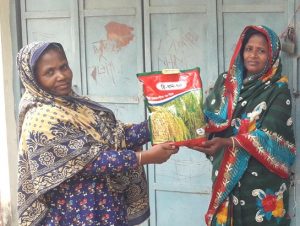Dhaka, Oct 1 – Agriculture takes up almost 40% of the planet’s ice-free land surface, accounts for 70% of the freshwater used in the world, and produces about 30% of global greenhouse gas emissions. It is also the single biggest driver of biodiversity loss. Meanwhile, climate shocks and extreme weather events can cause food price volatility that affects both consumers and producers around the world – hitting hardest in poor countries. Agroecology is the “ecology of the food system” and a farming approach that is inspired by natural ecosystems. There is growing evidence that agroecological farming systems keep carbon in the ground, support biodiversity, rebuild soils, and sustain yields, providing a basis for secure livelihoods. Agroecological methods can also help farmers cope with climate change by enhancing resilience.
Around the world, innovative agroecological farmers increasingly challenge the
dominant industrial way of farming. Combining local and scientific knowledge,
they put resilience thinking into practice to feed growing populations and cope
with climate change, water scarcity, market volatility, and more.
André Gonçalves, a professor of agroecology at Instituto Federal Catarinense in Brazil conducted research in several countries and found solid practical success stories of the seven principles for building resilience which is as follows: (1) Extensive use of diversity of crops, farming techniques, and livelihoods; (2) Managing connectivity; (3) Managing slow variables and feedbacks; (4) The landscape as a complex adaptive system; (5) Learning; (6); Participation;
and (7) Decentralised governance. He concludes that agroecological and resilience-building approaches to agriculture are crucial for reaching the sustainable development goals. – Third World Network
How are Agroecological Farmers Challenging the Industrial Way of Farming?




